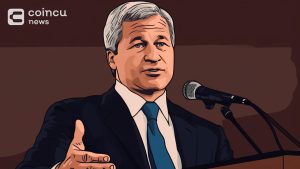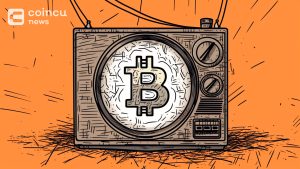What Does The Rest of 2022 Hold For The NFT Market?
A downturn in global economic has had a significant impact on the crypto market in the first half of 2022. Despite poor price performance, NFTs have continued to gain traction as developers capitalize on new use cases. While certain NFTs may fall within the jurisdiction of the US Securities and Exchange Commission, the most majority are likely to stay unregulated for the foreseeable future.

Conditions in the market for Non-Fungible Tokens have deteriorated significantly in several ways. According to CryptoSlam data, weekly NFT trading volumes nearly reached $1.0 billion in August 2021, but have been continuously below $50 million since mid-May, the lowest since early 2021, prior to the first large burst in the NFT industry.
Meanwhile, after exceeding 1 million weekly NFT sales on a few occasions in 2021, according to CryptoSlam data, these volumes have also dropped in recent months. This week, there have been less than 150,000 NFT sales, which is also the lowest number since early 2021.
The recent drop in the price floors of the most popular NFT collections demonstrates the current deterioration in market conditions. Consider the world-renowned Bored Ape Yacht Club (BAYC) collection (of 10,000 cartoon apes). The price floor (i.e. the cheapest BAYC currently on the market) was roughly $132,000 as of Sunday, down from over $400,000 as recently as late April and at its lowest level since October 2021.
Meanwhile, the price floor for one of the 10,000 CryptoPunk, which were among the first to capitalize on the notion of a social network profile photo as a collectible digital item, was recently about $74,000, the lowest since early 2021.
Worsening Global Economic/Macro Conditions Largely To Blame

The current disappointing performance of NFTs and deterioration in market circumstances is unsurprising given the ongoing, still deteriorating cryptocurrency bear market. Traditional investors continue to view digital assets as highly speculative/risk-sensitive assets, and they have taken a beating as global economic prospects deteriorate in 2022, as well as global financial conditions tighten.
In other words, inflation remains extremely high in several of the world’s largest economies (including the United States, the United Kingdom, and the Eurozone), prompting major central banks to tighten monetary policy. Tighter financial conditions tend to harm risk-sensitive assets (such as digital assets) by draining excess liquidity from the system and increasing the opportunity cost of not investing in safe-haven government debt assets.
Meanwhile, soaring inflation, the occurrence of war between Russia and Ukraine, and new Chinese lockdowns in the context of China’s continued zero Covid-19 policy are weighing on global economic development. Many economists believe that major global economies will enter a recession this year.
As New Use Cases Gain Traction, NFT Adoption Is Expected To Continue.

The preceding may appear to be all doom and gloom. And, in the absence of a considerable improvement in global macroeconomic conditions, the outlook for a large price rebound does not look promising for owners of NFTs from some of the industry’s most well-known collections.
Under the hood, however, industry trends remain overwhelmingly positive, implying that the NFT market’s long-term forecast remains good. Most big social media businesses have been making steps to provide NFT capability to their massive Web2 user bases since the beginning of the year.
Both Facebook and Instagram, which are owned by Meta Platforms, are working on features that will allow users to use NFTs as profile images and mint new NFTs in the platform.
Hundreds of businesses have launched or announced plans to launch NFT marketplaces. While OpenSea continues to lead the sector, Sotheby’s, Shopify, and Gamestop have all launched NFT markets.
In other news, celebrities are lining up to debut NFT collections that will give them a new opportunity to communicate with their fans. Kanye West, Billie Eilish, David Beckham, The Notorious BIG’s LLC, and Chuck Norris are among the celebrities who have filed for NFT trademark applications with the US Patent and Trademark Office.

Bela Hadid is apparently planning to release her CY-B3LLA collection of 1,111 NFTs soon, with collectors supposedly getting access to see Hadid in person in cities across the world, among other perks. NFT sales appear to be becoming a common aspect of celebrity/artist/creator interactions with their audience.
Furthermore, non-profit/charitable groups are increasingly using NFTs to communicate with potential donors and generate funding for their causes. This year, Australia Zoo introduced its Wildlife Warriors NFT project, with all sales proceeds benefiting the zoo’s conservation activities.
Meanwhile, the World Wildlife Foundation (WWF) began its Non-Fungible Animals project this year to generate funds for the conservation of ten animal species on the verge of extinction. The WWF plans to release one NFT for each of these near-extinct animals that are still known to be alive, and had allegedly raised about $300,000 by early May.
While 2022 has not been a year of great price performance for NFTs, it has witnessed significant progress in terms of NFT and related technology acceptance into the societal mainstream. This tendency is expected to continue into 2023 and beyond.
When global macroeconomic conditions improve, it would not be shocking to see NFT prices bounce dramatically and even set new record highs. If inflation begins to fall later this year, allowing central banks to loosen policy, this may be a 2022 story.
Regulatory Probe Into NFT?

Of course, when NFTs enter the domain of ensuring the owner monetizable future advantages, they run the risk of becoming securities.
Earlier this year, sources within the US Securities and Exchange Commission (SEC) told Bloomberg that the US regulatory agency is keen to investigate unlawful digital token offers and determine whether NFTs should be classified as securities. In recent months, the government has served subpoenas on different NFT producers, markets, and crypto exchanges in order to gather information.
SEC commissioner Hester Pierce said in an interview:
“Given the breadth of the NFT landscape, certain pieces of it might fall within our jurisdiction. People need to be thinking about potential places where NFTs might run into the securities regulatory regime,”
Many in the Web3/crypto world refer to Pierce as the SEC’s crypto mom due to her (usually) pro-crypto position.
If the SEC deems a portion of the NFT industry to fall under its regulatory scope, which could stifle growth in the short term, the majority of the NFT space appears “safe” (from regulation) for the time being.
Senators Kirsten Gillibrand and Cynthia Lummis, for example, issued a much-anticipated legislation this week aimed at implementing comprehensive rules across the cryptocurrency space. The proposal, which is the first major attempt by US lawmakers to regulate cryptocurrency, says little about NFTs.
DISCLAIMER: The Information on this website is provided as general market commentary and does not constitute investment advice. We encourage you to do your own research before investing.
Join CoinCu Telegram to keep track of news: https://t.me/coincunews
Follow CoinCu Youtube Channel | Follow CoinCu Facebook page
Patrick
CoinCu News




















